kohlrabi (Brassica oleracea) Profile
Written by Iris
Aug 18 2021
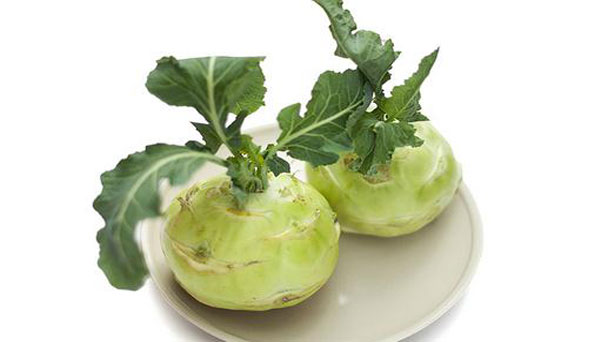
Kohlrabi (Brassica oleracea) is similar to tennis balls sprouting kale leaves. kohlrabi (Brassica oleracea) looks strange but tastes good. The leaves and petioles of kohlrabi (Brassica oleracea) relative are edible, but most gardeners grow it for the enlarged spherical parts that form above the soil surface. kohlrabi (Brassica oleracea) is probably native to Western Europe.
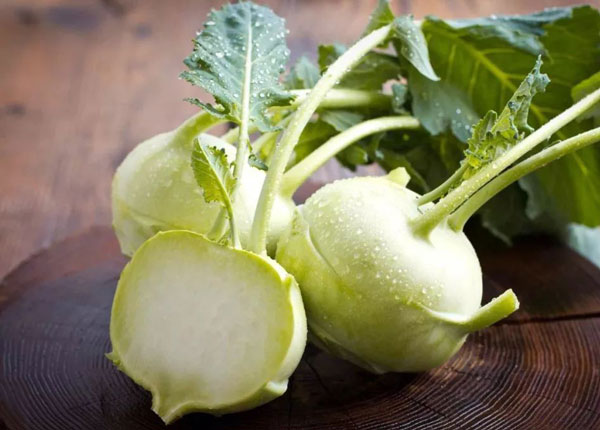
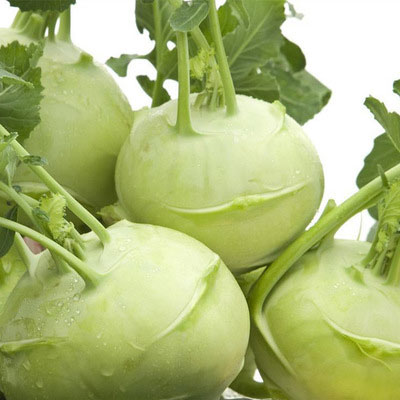
Plant seeds indoors approximately 4 to 6 weeks before the final frost.
Direct sow seeds directly in the garden bed in mid to late summer to grow a fall or early winter crop.
Seeds should be planted at a depth of ¼ inch to ½ inch.
Transplant seedlings when they are 3-4 weeks old and after the danger of frost has passed.
Plant root balls of transplants so that they are level with the ground so that the bulbous portion will grow above the soil and not rot out.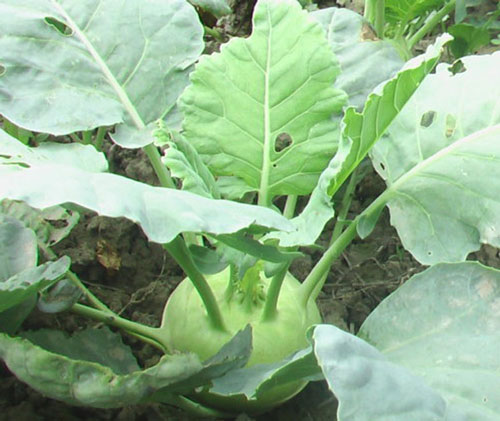
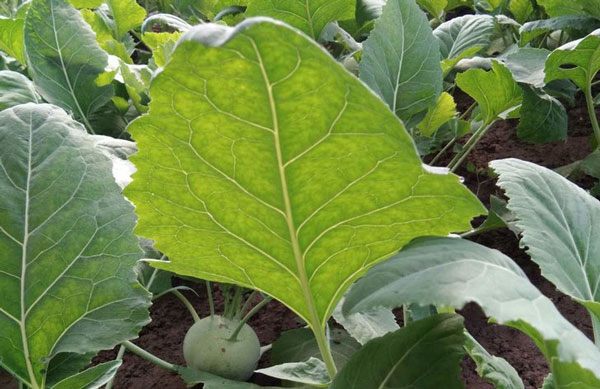
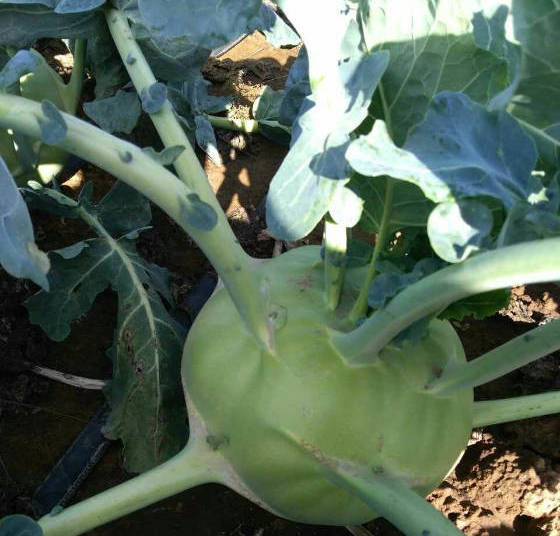
THe beet armyworm will cause leaves to appear skeletonized due to heavy feeding. Use organic methods to control this insect such as Bacillus thuringiensis.
Cabbage aphids can stunt plant growth and even cause death. THe insects are gray-green and will be visible on the leaves. These aphids only feed on cruciferous plants but can survive on related weeds. If the infestation isn’t bad, prune out the affected leaves. However, if the infestation is heavy, spray the sturdier plants with a strong jet of water to knock the aphids off the leaves.
Cabbage loopers will cause extensive damage in the leaves. The caterpillars are green and have white lines on each side of their body. They will overwinter in crop debris. Handpick the larvae off the plants or apply Bacillus thuringiensis to kill the younger larvae.
Alternaria leaf spot will cause small spots on the leaves that are darker and will later turn brown or gray. Lesions may appear round or angular. The lesions may then form rings and become brittle and crack. This disease is most likely to become a problem during cool, wet periods. The best ways to prevent this from happening is by planting pathogen-free seeds, practice crop rotation and apply the correct fungicides to control the Alternaria leaf spot when it occurs.
Black rot will cause seedlings to develop yellow or brown leaves that wilt and collapse. It is most prevalent in warm, wet conditions. To control this disease, practice good sanitation, plant disease-free seed and rotate crops.
Damping-off will kill seedlings after they germinate. Symptoms include black rot girdling on the stem, and the seedlings may remain upright but the stem will appear constricted or twisted, which is why damping-off also is known as wirestem. It favors cool temperatures. To prevent this, plant pathogen-free seeds and apply fungicides when necessary.
Clubroot will cause plants to be slow growing or stunted, and the leaves will turn yellow and wilt during the day. To avoid this disease from occurring, plant certified seeds and apply lime to the soil.
Downy mildew will cause irregular yellow patches which turn brown. These patches are located on the leaves. A gray growth will appear on the bottom of the leaves. The disease is more likely to occur when the environment is cool and wet. To prevent this, remove crop debris and practice good crop rotation.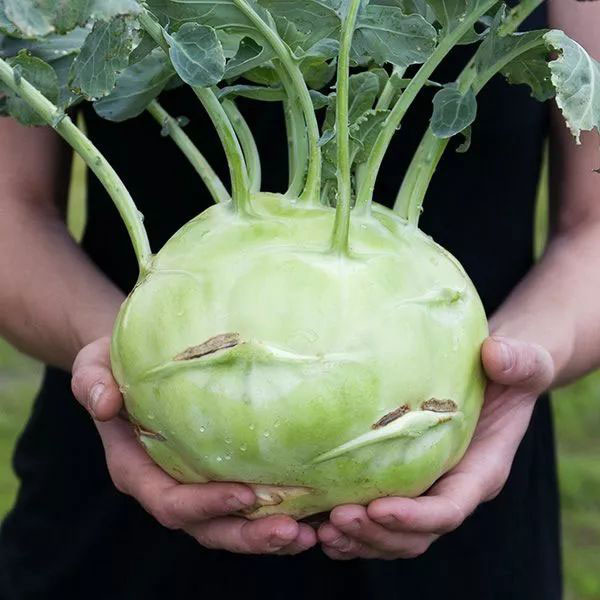
Pull the stems and root from the ground or cut below the stem with a sharp knife. kohlrabi (Brassica oleracea) doesn't store well so harvest as you need it, if you want to store kohlrabi for several weeks, remove the leaf stems and place, unwashed, in sealed plastic bags in the refrigerator.
The leaves are also edible. They can be added to salads, or boiled like spinach.
kohlrabi (Brassica oleracea) Picturekohlrabi (Brassica oleracea) Infokohlrabi (Brassica oleracea) Distribution AreaHow to Grow and Care for kohlrabi (Brassica oleracea)Uses of kohlrabi (Brassica oleracea)Varieties of kohlrabi (Brassica oleracea)kohlrabi (Brassica oleracea) Common Pests/Diseaseskohlrabi (Brassica oleracea) Harvestingkohlrabi (Brassica oleracea) Companion Plants
kohlrabi (Brassica oleracea) Picture

kohlrabi (Brassica oleracea) Info
| Botanical Name | Brassica oleracea |
| Common Names | Kohlrabi; German turnip |
| Plant Type | Herbaceous biennial |
| Mature Size | 18 inches tall, 18 to 24 inches wide |
| Sun Exposure | Full sun |
| Soil Type | Rich, moist loam |
| Soil pH | Slightly acidic (5.5 to 6.9) |
| Bloom Time | Summer |
kohlrabi (Brassica oleracea) Distribution Area
Kohlrabi, also known as German turnip or cabbage turnip, is very popular in Northern and Eastern European countries like Germany and Hungary as well as northern Vietnam and eastern India.
How to Grow and Care for kohlrabi (Brassica oleracea)
How to Grow kohlrabi (Brassica oleracea)
- With Seeds
Plant seeds indoors approximately 4 to 6 weeks before the final frost.
Direct sow seeds directly in the garden bed in mid to late summer to grow a fall or early winter crop.
Seeds should be planted at a depth of ¼ inch to ½ inch.
Transplant seedlings when they are 3-4 weeks old and after the danger of frost has passed.
Plant root balls of transplants so that they are level with the ground so that the bulbous portion will grow above the soil and not rot out.

How to Care for kohlrabi (Brassica oleracea)
- Light
- Soil
- Water
- Temperature and Humidity
- Fertilizer

Uses of kohlrabi (Brassica oleracea)
- Edible Uses
- Medicinal Uses

Varieties of kohlrabi (Brassica oleracea)
Kohlrabi belongs, like kale, cauliflower, or white cabbage, to the cabbage family. Basically, a distinction is made between early and late varieties on the basis of their sowing and harvesting times. However, there are now also many varieties of kohlrabi that can be grown throughout the season. Plants with light green to almost white tubers and green leaves are the most common in this country. A classic is the Superschmelz variety; its yield can weigh several kilos, and yet it remains very tender! If you prefer a bit more color, there is also kohlrabi with blue-violet-veined leaves and shells, such as Azur Star and Blaro. Their tubers grow and ripen more slowly, but taste even more tender than the white ones.kohlrabi (Brassica oleracea) Common Pests/Diseases
When growing vegetables, it is always exciting to care for the plant throughout its growing phase and then harvest it for delicious recipes later on, but one thing to watch out for is pests and diseases. Different plants are susceptible to different types of pests and diseases, and Kohlrabi can fall victim to several different pests and diseases, many of which are similar to the problems affecting greens.Pests
A few of the common pests affecting kohlrabi include the beet armyworm, the cabbage aphid, the cabbage looper and more.THe beet armyworm will cause leaves to appear skeletonized due to heavy feeding. Use organic methods to control this insect such as Bacillus thuringiensis.
Cabbage aphids can stunt plant growth and even cause death. THe insects are gray-green and will be visible on the leaves. These aphids only feed on cruciferous plants but can survive on related weeds. If the infestation isn’t bad, prune out the affected leaves. However, if the infestation is heavy, spray the sturdier plants with a strong jet of water to knock the aphids off the leaves.
Cabbage loopers will cause extensive damage in the leaves. The caterpillars are green and have white lines on each side of their body. They will overwinter in crop debris. Handpick the larvae off the plants or apply Bacillus thuringiensis to kill the younger larvae.
Diseases
Some of the common diseases affecting kohlrabi include Alternaria leaf spot, black rot, damping-off, clubroot, downy mildew and more.Alternaria leaf spot will cause small spots on the leaves that are darker and will later turn brown or gray. Lesions may appear round or angular. The lesions may then form rings and become brittle and crack. This disease is most likely to become a problem during cool, wet periods. The best ways to prevent this from happening is by planting pathogen-free seeds, practice crop rotation and apply the correct fungicides to control the Alternaria leaf spot when it occurs.
Black rot will cause seedlings to develop yellow or brown leaves that wilt and collapse. It is most prevalent in warm, wet conditions. To control this disease, practice good sanitation, plant disease-free seed and rotate crops.
Damping-off will kill seedlings after they germinate. Symptoms include black rot girdling on the stem, and the seedlings may remain upright but the stem will appear constricted or twisted, which is why damping-off also is known as wirestem. It favors cool temperatures. To prevent this, plant pathogen-free seeds and apply fungicides when necessary.
Clubroot will cause plants to be slow growing or stunted, and the leaves will turn yellow and wilt during the day. To avoid this disease from occurring, plant certified seeds and apply lime to the soil.
Downy mildew will cause irregular yellow patches which turn brown. These patches are located on the leaves. A gray growth will appear on the bottom of the leaves. The disease is more likely to occur when the environment is cool and wet. To prevent this, remove crop debris and practice good crop rotation.

kohlrabi (Brassica oleracea) Harvesting
kohlrabi (Brassica oleracea) is usually harvested at tennis ball size. Most gardeners will tell you that if left to get any larger it will get tough and woody. As long as you keep the plant well watered and fed larger kohlrabi (Brassica oleracea) will be just as tender as small ones. Clearly don't take this to the extreme, big old plants will taste like your kitchen table.Pull the stems and root from the ground or cut below the stem with a sharp knife. kohlrabi (Brassica oleracea) doesn't store well so harvest as you need it, if you want to store kohlrabi for several weeks, remove the leaf stems and place, unwashed, in sealed plastic bags in the refrigerator.
The leaves are also edible. They can be added to salads, or boiled like spinach.
kohlrabi (Brassica oleracea) Companion Plants
Good companion plants for kohlrabi are brussels sprouts, kale, cabbage, onions, garlic, cauliflowers, beets, cucumbers, celery, potatoes, shallots, mustard, thyme, broccoli and lettuce. You should not plant kohlrabis with sunflowers, beans, tomatoes, melons, pumpkins and strawberries.
Latest Updated
- Benefits of Bugleweed - 7 Science-backed Health Benefits
- Bugleweed Dangers & Side Effects - Is It Poisonous?
- How to Plant Evergreen Trees - What You Should Know
- When to Plant Evergreens - Grow Guide for Evergreen Trees
- 12 Wonderful Evergreen Shrubs for Your Garden
- 12 Popular Evergreen Plants with Pictures for Beginners
- When And How To Prune A Lilac Bush Like a Pro
- How to Grow & Care for Lilac Vine (Hardenbergia Violacea)
- Japanese Lilac Tree (Syringa Reticulata) Care & Propagation Guide
- Shumard Oak Pros and Cons - What to Know
Popular Articles
- Winter maintenance of Antirrhinum Majus
- How to Grow Terminalia Mantaly Tree
- How to Grow and Care for Crossostephium Chinense
- How to grow Antirrhinum Majus in spring
- Peristeria Elata (Dove Orchid) Profile: Info & Care Guide
- Underwatered Snake Plant (Sansevieria Trifasciata) - Signs And How To Fix
- How to Care for Brazilian Jasmine Plant (Mandevilla Sanderi)
- How to Grow & Care for Graptopetalum Purple Delight in Summer
- Rosa Chinensis (China Rose): Plant Growing & Care Tips
- How to Care for Baby Sun Rose (Aptenia Cordifolia)